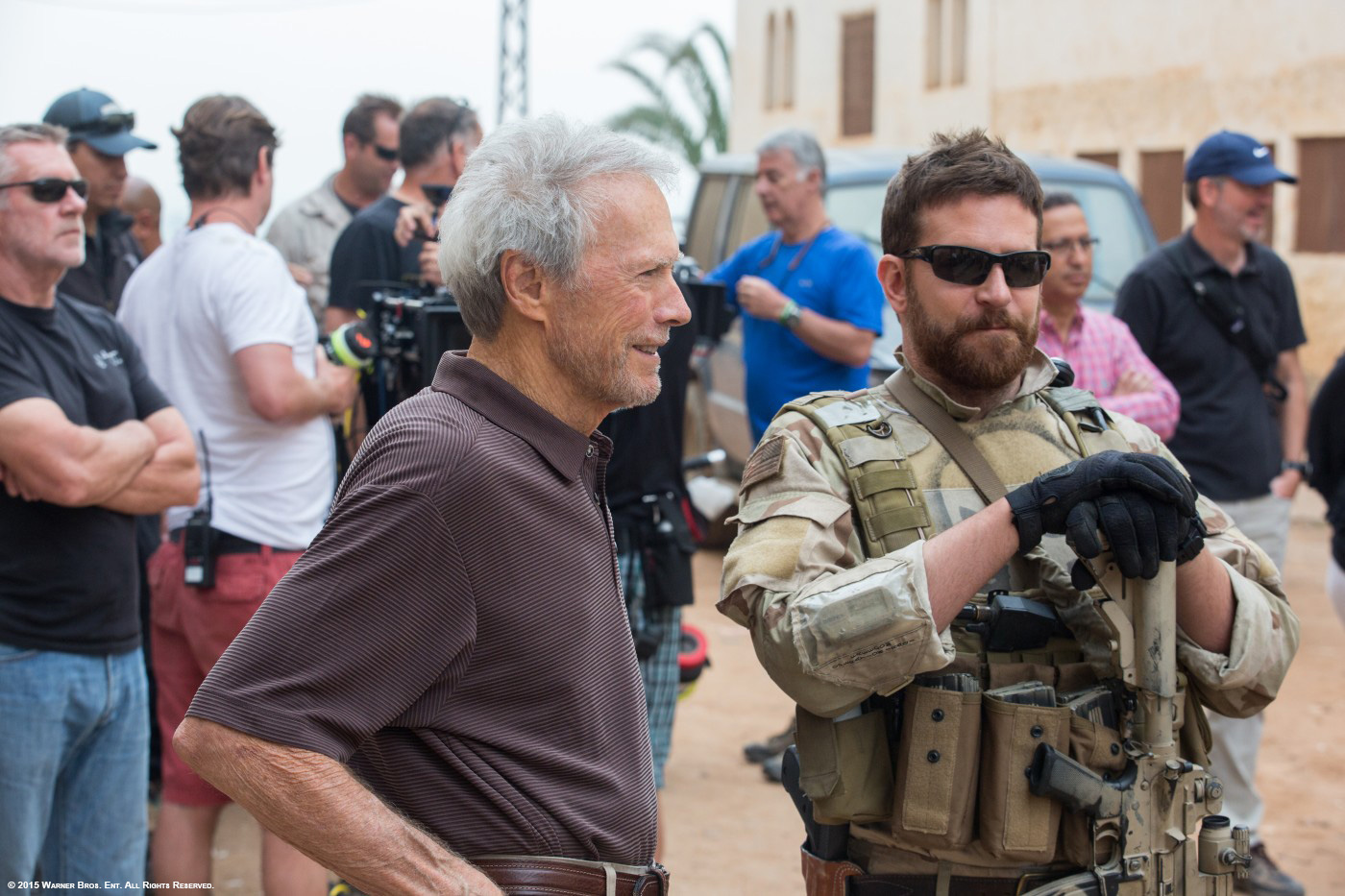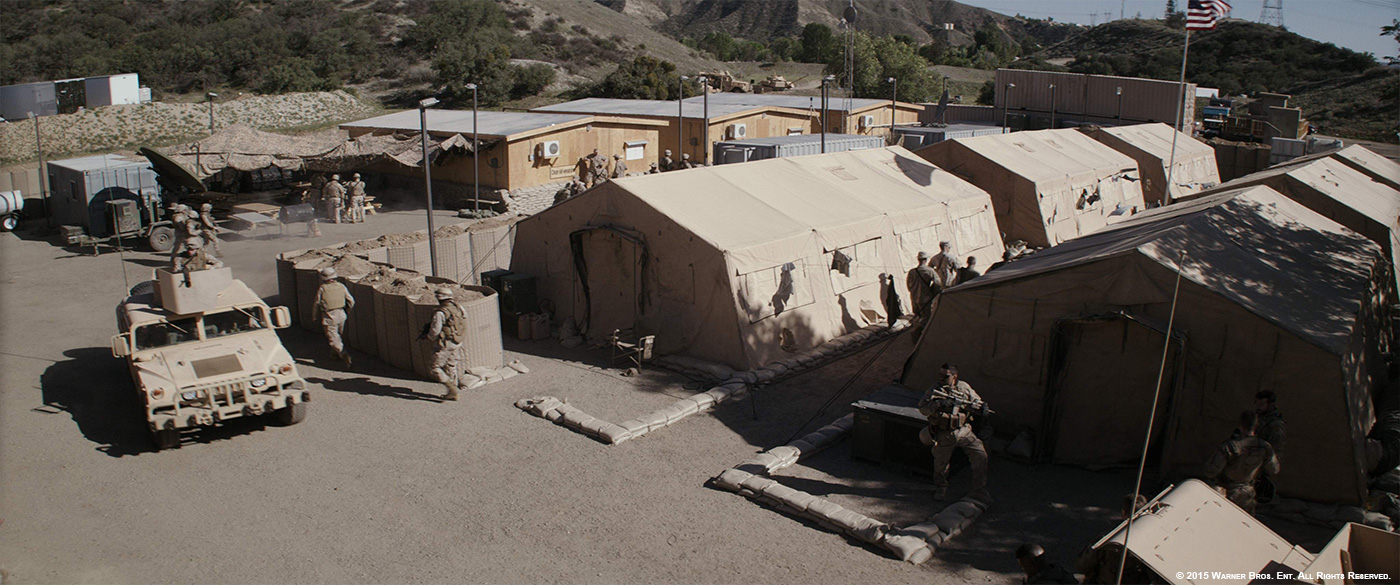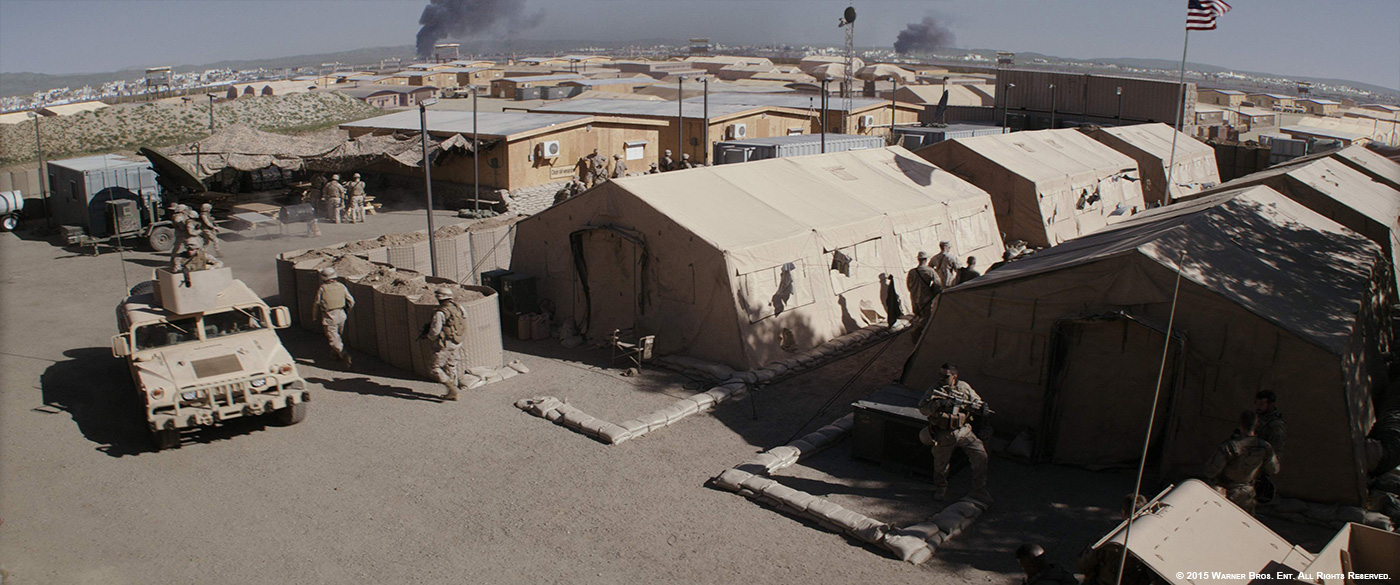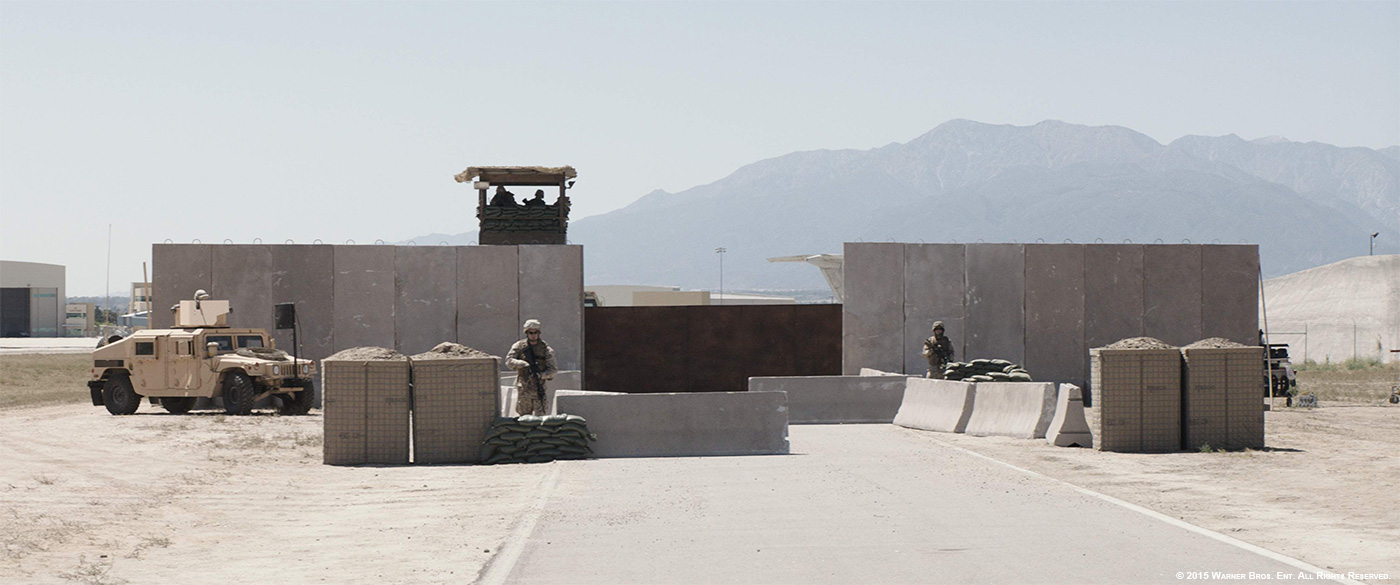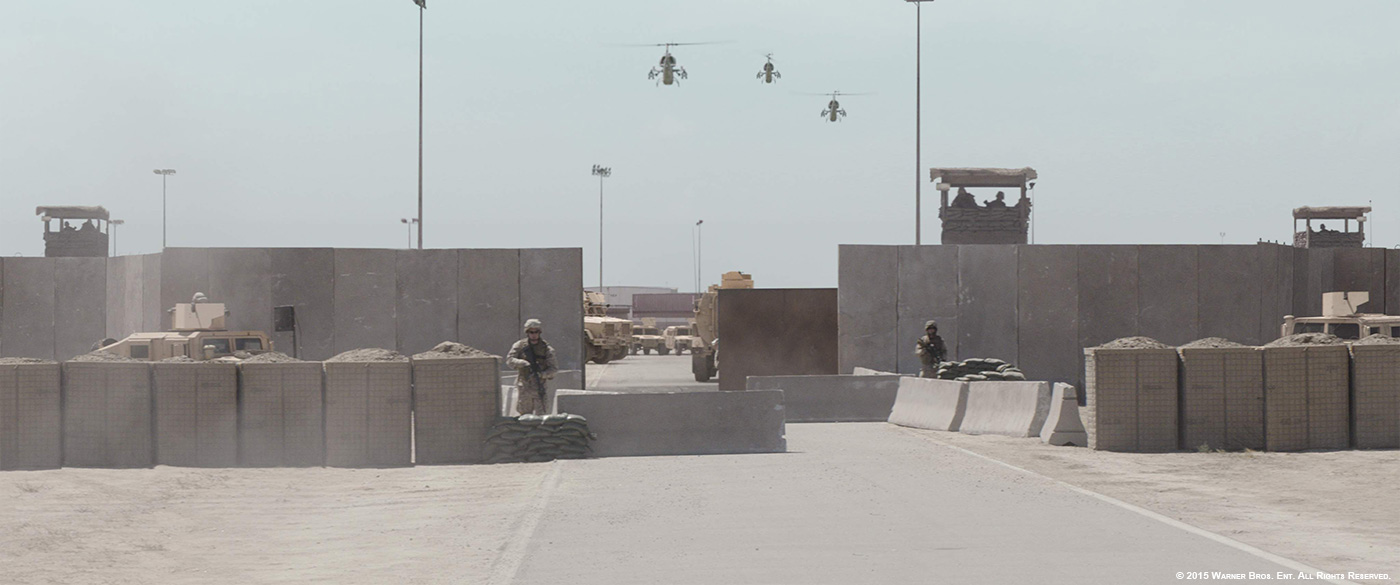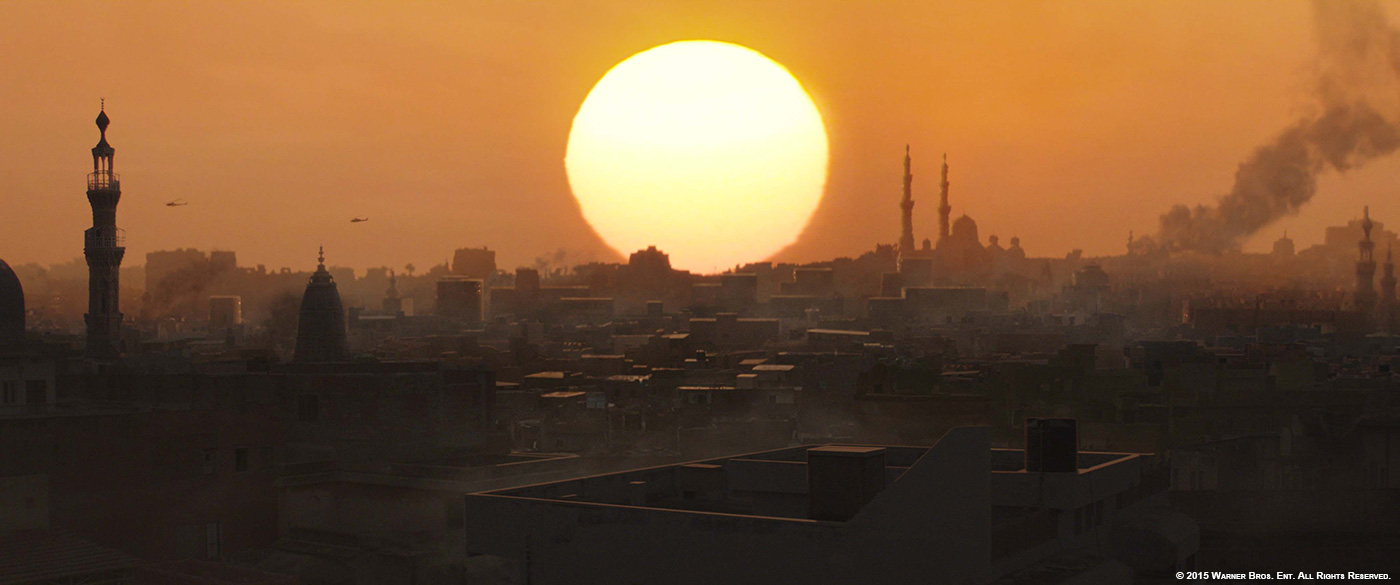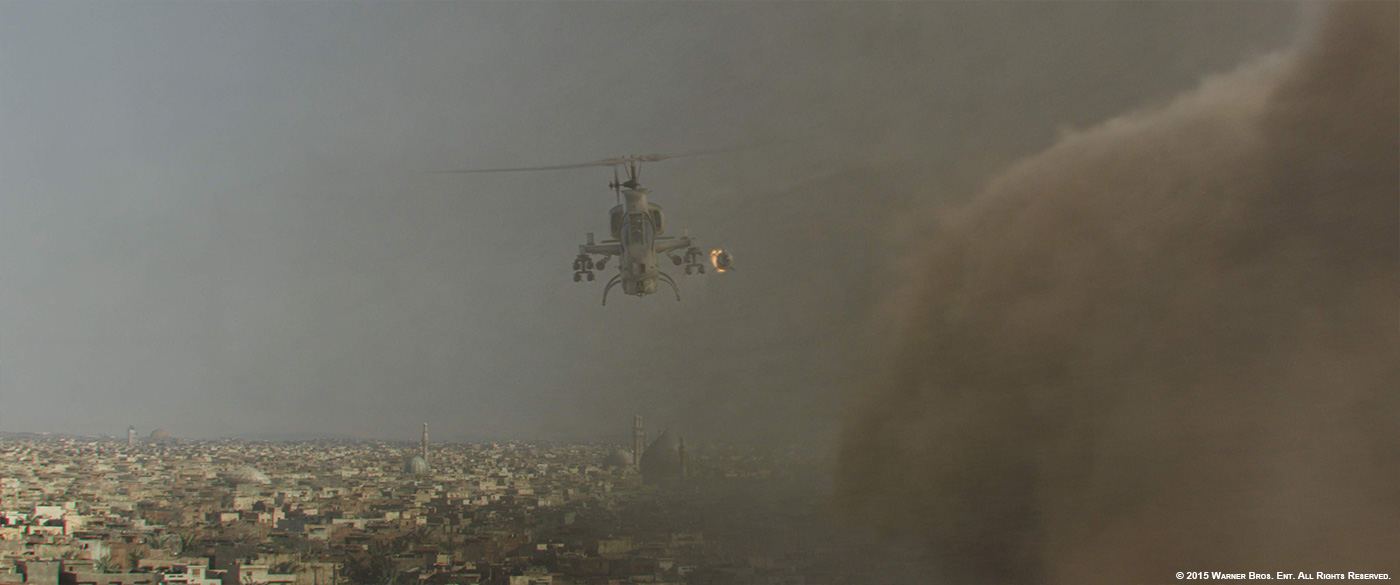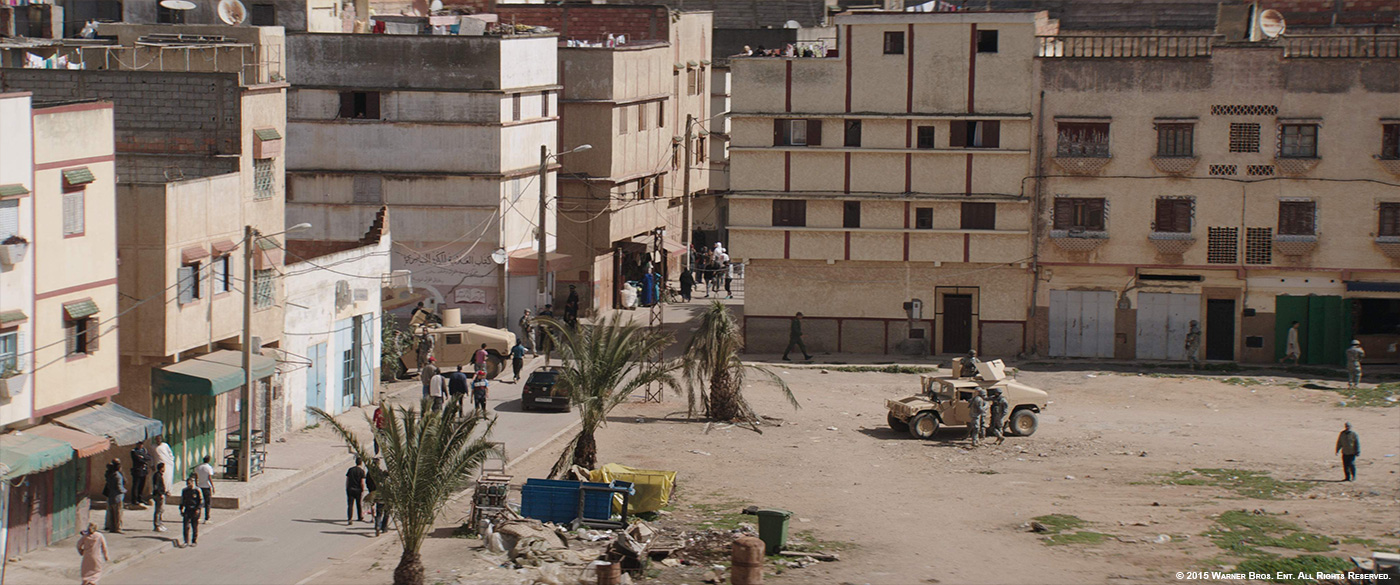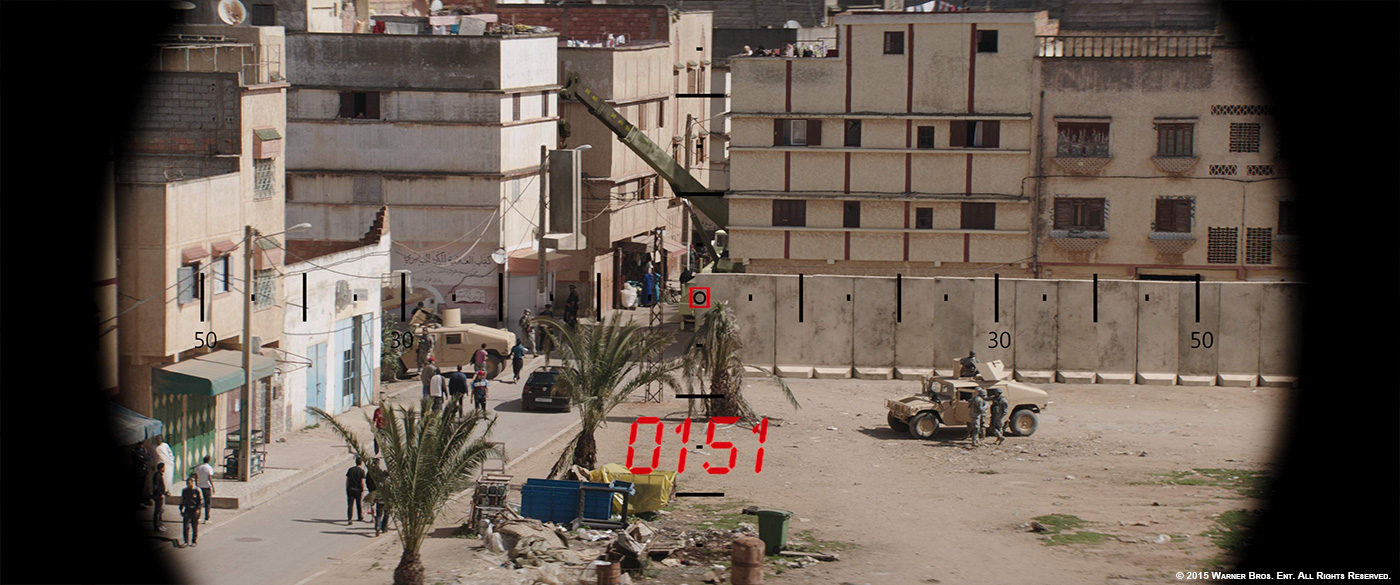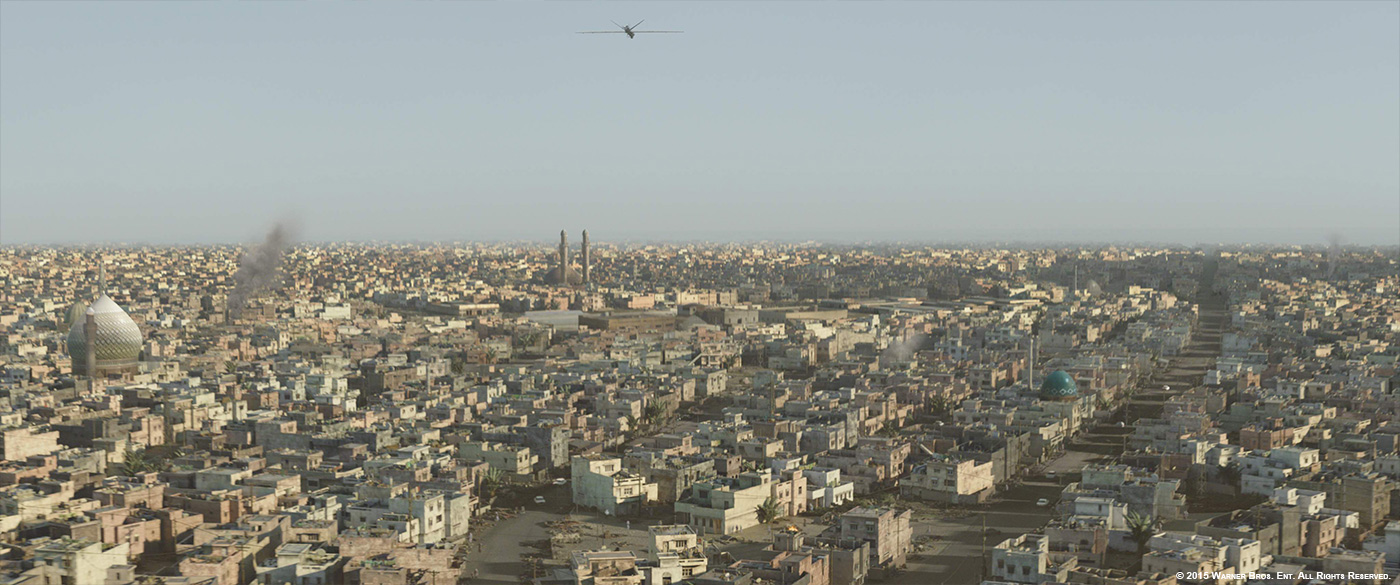Last year, Greg Butler talked to us about his work on JERSEY BOYS. Now he explains in detail the work of MPC on AMERICAN SNIPER his new collaboration with director Clint Eastwood.
How did you got involved on this show?
As we were finishing the visual effects work on JERSEY BOYS, I started talking to Michael Owens about his next project. He flew to Morocco to supervise AMERICAN SNIPER a few weeks after JERSEY BOYS delivered.
That’s your second movie with director Clint Eastwood. How was this new collaboration?
It was very much like the first time. The mission was clear from the start and there were very few surprises. We met with Clint once, when he, Bradley Cooper, and Rob Lorenz flew up to Vancouver mid-way through our schedule. They reviewed everything that was in progress and asked for a few changes, mainly to do with continuity and increased action. The edit changed a few more times then it did on JERSEY BOYS, but still much less then on standard visual effects projects.
Can you tell us more about your collaboration with Production VFX Supervisor Michael Owens?
Working with Michael is always great. After 15 years of working with Clint, he knows when to keep things simple and when to get creative with a shot. He’s always open to ideas and really good working with the crew, which was something I made sure happened on both our projects together.
What was their approach about the visual effects?
The visual effects brief was straight forward. What couldn’t be done safely or cost effectively onset, we did. That covers a majority of the vfx work on the film. There was also a small group of shots that everyone knew would need to be done in post because of their dependence on
editorial decisions or because there was a lot of design work involved. For example, the rifle scope POV shots or the fully digital shots of Sadr City and the Super Cobra firing a missile over the head of Chris Kyle.
Can you describe one of your typical day on-set and then during the post?
I didn’t attend any of the filming. A typical day in post production started with a morning production meeting where we discussed the daily and weekly targets. On a typical day there would be various rounds and dailies review sessions. A few times a week we would have an evening cineSync call with Michael to review material and get approvals and feedback. Michael flew up to see us a few times during the 3 months schedule and then stayed up in Vancouver for the last few weeks to wrap everything up.
Can you explain in details about the helicopters creation?
We built a US Marine Corps AH-1W Super Cobra. This is the helicopter that launches a hellfire missile in the 3rd act battle. We also used the asset in a few other shots; such as when Chris Kyle takes off in a Huey after seeing his brother at the airbase. We were given very detailed information on the paint scheme by the film’s military advisor, Sgt. Major James Dever. There was plenty of information available on the internet to create the model, but I wanted to make sure we were able to use the right markings for a helicopter used in the Iraq conflict. I’m sure there’s some things we got wrong in the military equipment we created, but I tried to be accurate as often as we could. The trickiest thing with the digital helicopter was getting the motion blur of the roto blades right. We did it using subframe motion blur in Renderman, but it took some tests to get the rotation speed and samples just right.
The movie took places in various Iraqi cities. How did you created these locations?
The filming took place in California and Morocco. We studied photos of Sadr City and the location background plates. We then built our virtual environment with a mixture of California industrial buildings, Moroccan residential buildings and Northern Baghdad street layouts.
How did you approach the beautiful flying shot from the Wall to the Roof?
That shot went through many camera iterations. It was a very complicated move that had to cover a lot of physical and editorial ground. We start off in the green zone flying over the city. The camera starts tilting down and we pass over the T-Wall that the American military is constructing. The camera ends up looking almost straight down as we rotate around an
industrial section containing groups of insurgents and a small American force drives unnoticed up to an abandoned factory. Late in the design process, Michael asked us to start tilted up on a surveillance drone. This was the hero shot for our Sadr City build, even though we see more of the city in later helicopter attack shots. We based the layout on how the real T-Wall was built at the edge of the Green Zone, but there are a lot of cheats to get the camera compositions we were looking for.
Can you explain in details about its creation?
The city was constructed with around 12 basic building models repeated and laid out on top of a large matte painting of the roads and alleys. A lot of prop models were scattered around, especially on the rooftops. Things like satellite dishes and old building materials. Additional custom models of industrial and religious buildings were placed where they would work
best visually.
What was the main challenge with this shot?
The biggest challenge was balancing all of the different things the shot had to cover while still using it as a master shot for many other moments in the 3rd act battle. When the camera looks off of the factory roof, we see the same master environment as in this opening shot.
Many explosions happens in the movie. How did you enhanced them?
We only really worked on two explosion moments. When the “Butcher’s” SUV blows up, we used two different library elements mixed together with some CG car pieces. When the Super Cobra hellfire missiles explodes in the building behind Chris Kyle, we did an entirely digital explosion in Scanline’s Flowline software. The building structure collapse was done using our Kali destruction software, which runs in Maya.
How did you approach the sand storm sequence?
The main sand storm effect was created using a series of Flowline simulation based on large abstract cloud-like geometry. These were arranged in layout before getting picked up by the fx dept. It was tricky getting the right amount of movement. We wanted to have a sense of motion in distant views without everything moving too fast in close up shots. We managed to get the balance right, although a few of the closest shots had to be redone as custom sims to get them slow enough for the right feeling of scale. In mid distant shots, compositing ran some live action dust cloud elements through the CG to give it an additional level of grain and texture.
How did you design and created the various snipers POV?
We created one very large matte painting to cover all of the views through Chris Kyle’s rifle scope when he’s looking back towards the green zone, searching for Mustafa, the enemy sniper. We pushed in closer and closer to the painting to as the scene progresses. The last few shots use a plate shot in Morocco with a lot of 2D treatment layered on top.
Is there any invisible effects you want to reveal to us?
We added additional military vehicles to a number of different shots. The production only had a few Humvees, MRAPs and M1 Abrams on the live action shoot. We built digital versions and used them pretty often. The opening shots of the film that show a M1 Abrams moving down the street were actually filmed using a M60 Patton tank. We covered the live action tank with the period accurate version which happens to have very similar treads, which we kept.
How did you work with the other VFX Studios and their VFX Supervisors?
We were the first vfx facility on the project, but other companies were quickly added as the scope of the project grew from 100 shots to over 800. We shared shots with Pacific Title, Sony Pictures Imageworks and Image Engine. Most of the shared work was very straight forward and I only had a couple of conversations with each of the other vfx supervisors. Everyone involved was very easy to get along with.
Was there a shot or a sequence that prevented you from sleep?
The drone POV shots went fully digital very late in the process. Helicopter plates had been shot for aerial views above the factory where Chris Kyle and his team are pinned down. Michael decided that the plates were going to be too hard to make work and asked us to do them full CG. We got someone to go back out to the location in California and take a series of still photos as we had very little reference of that set. We used these to rapidly recreate the factory and surrounding buildings. Going CG was the right call, but I wasn’t sure we were going to get them looking good enough with only a month to go before delivery.
What do you keep from this experience?
I feel privileged to have been a part of making this film. I explained to the whole crew when we started that we would be working on a project that deals with real people who made real sacrifices and endured terrible things for their country. I didn’t treat this as just another vfx project, where blood and destruction are created on a computer. I didn’t want our work to be noticed and I’m happy that our contributions were rarely mentioned in the reviews that were written when the film was released. The focus was where it should be, on Bradley Cooper’s gripping performance as Chris Kyle, an American who’s story has brought the Iraq war and it’s impact back into the public spotlight.
How long have you worked on this show?
We worked on AMERICAN SNIPER for almost exactly three months to the day, from plate turnover to final delivery. It’s the quickest visual effects project I’ve ever been involved in.
How many shots have you done?
Around 200 shots in total.
What is your next project?
My current position at MPC is Head of VFX; I support the department heads and supervisors on many projects across the company. I don¹t have plans to work on a specific project at the moment.
A big thanks for your time.
// WANT TO KNOW MORE?
– MPC: Dedicated page about AMERICAN SNIPER on MPC website.
© Vincent Frei – The Art of VFX – 2015


